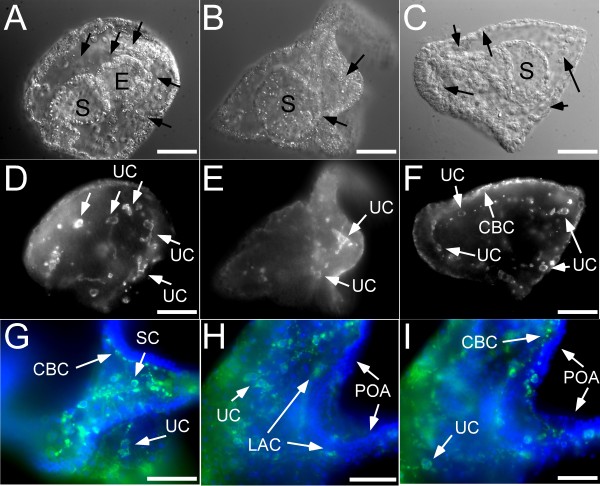Figure 2.
Pre-treatment of larvae with histamine (HA) leads to an increase of metamorphic competence based on a settlement induction assay with KCl (A) or settlement plates (SP) (B). Treatment of competent larvae with HA receptor 3 antagonist (C) and HA synthesis inhibitor (D) leads to induction of settlement. A cohort of larvae consisting of both, metamorphically competent and non-competent larvae (20% competence – (see Materials and Methods for details and replicates of experiment) were pre-treated with HA for 24 hours in filtered seawater in the complete absence of food and then exposed to the settlement induction assay. A) Larvae pre-exposed to HA settled at a significantly higher rate when exposed to KCl, a known artificial inducer of metamorphosis in sea urchin larvae compared to controls. (B) Larvae from the HA and control (no HA pre-exposure) did not undergo settlement without induction. After exposure to SP, histamine pre-treated larvae settled at a significantly higher rate compared to control larvae (no HA pre-exposure). We then tested the effect of histamine synthesis inhibitor and several HA receptor antagonists (note that larvae cohorts tested in these experiments were 80-100% competent). (C) Treatment of competent larvae with histamine receptor 3 antagonist (125 μM Thioperamide) for 24 hours leads to a significant increase in settlement without induction by KCl or SP. Histamine receptor 1 (125 μM chlorpheniramine) and receptor 2 (200 μM cimetidine) antagonists did not have any such direct effects on settlement rate. (D) Application of DL-alpha-methylhistidine (AMH, 100 μM), a known histidine decarboxylase (HDC) inhibitor to competent larvae for 72 h also led to a slight increase in settlement rate without induction.

